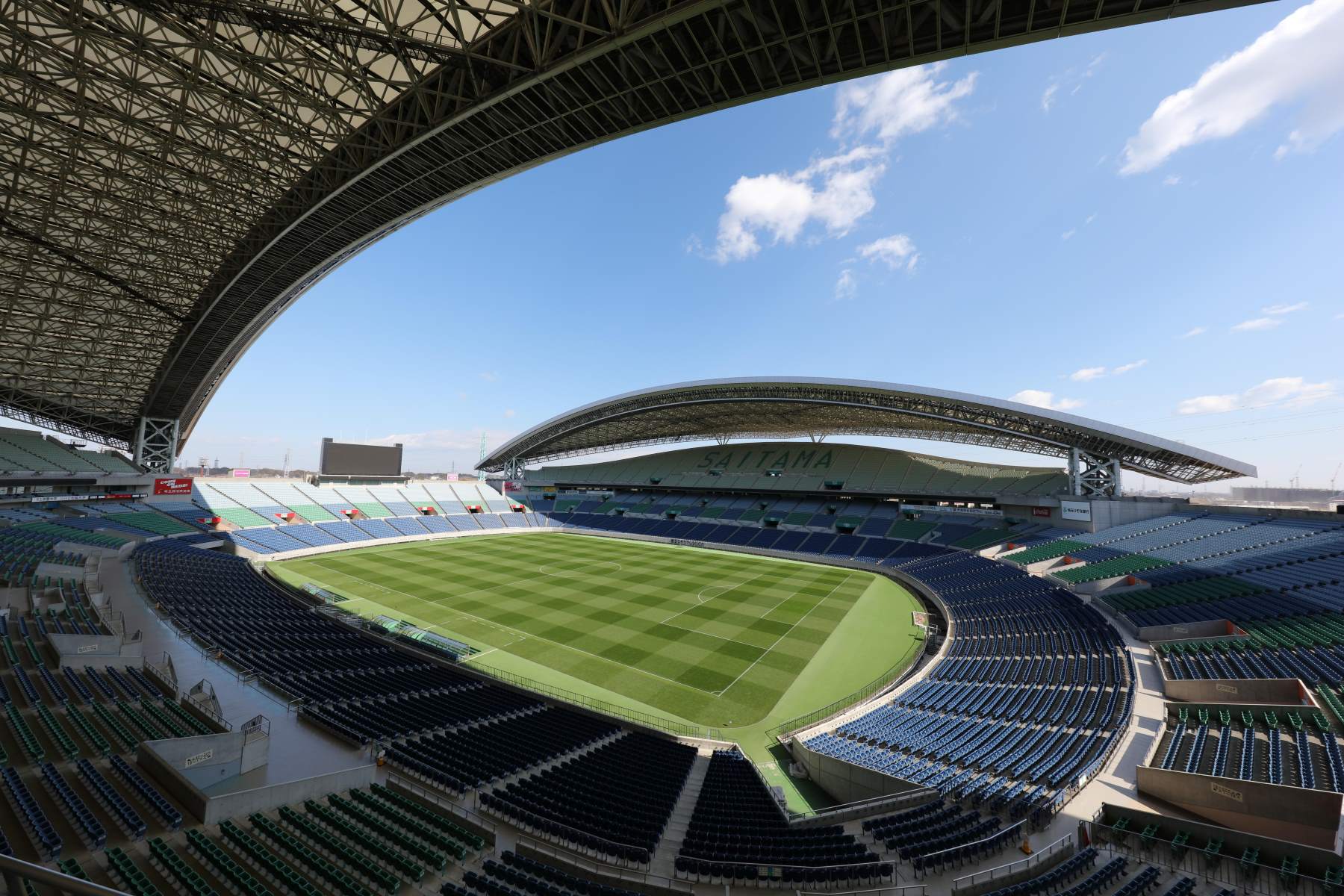
Saitama Stadium, also known as Saitama Stadium 2002, is a remarkable landmark located in Saitama City, Japan. This majestic stadium has gained recognition not only for its architectural beauty but also for its fascinating history and impressive capacity. As one of the largest stadiums in the country, Saitama Stadium has hosted numerous iconic sporting events and cultural performances.
In this article, we will delve into 14 unbelievable facts about Saitama Stadium that will leave you amazed and intrigued. From its significant role in the FIFA World Cup to its innovative design, this stadium has truly captured the hearts of both locals and visitors from around the world. So, buckle up and get ready to explore the wonders of Saitama Stadium!
Key Takeaways:
- Saitama Stadium, also known as Saitama Stadium 2002, is a remarkable sporting venue in Japan with a capacity of 63,700 spectators. It has hosted historic football matches and international music concerts, making it a must-visit destination for sports and music enthusiasts.
- The stadium’s impressive architectural design, state-of-the-art facilities, and picturesque surroundings make it a symbol of Japan’s sporting excellence. From hosting the 2002 FIFA World Cup to providing top-notch amenities for athletes, Saitama Stadium offers an unforgettable experience for visitors from around the world.
The Stadium Has a Capacity of 63,700 Spectators
Saitama Stadium has a staggering capacity of 63,700 spectators, making it one of the largest stadiums in Japan. The sheer size of the stadium allows for an electrifying atmosphere during major sporting events and concerts.
It Was Built in Preparation for the 2002 FIFA World Cup
Saitama Stadium was constructed as part of Japan’s preparations for the 2002 FIFA World Cup, which was co-hosted by Japan and South Korea. It served as one of the venues for the tournament and successfully hosted several matches, including a quarter-final match.
The Stadium Boasts an Impressive Architectural Design
Saitama Stadium features a modern and visually stunning design. Its unique roof structure, resembling a floating saucer, has become an iconic symbol of the stadium. The innovative architecture not only provides excellent views for spectators but also enhances the acoustics during events.
It Has a Natural Grass Pitch with State-of-the-Art Maintenance Systems
The stadium’s pitch is equipped with advanced maintenance systems to ensure optimal playing conditions. The natural grass surface is meticulously cared for, utilizing cutting-edge technology and techniques to keep it in pristine shape throughout the year.
Saitama Stadium Hosted the AFC Asian Cup 2004 Final
In addition to the FIFA World Cup matches, Saitama Stadium hosted the final match of the AFC Asian Cup in The prestigious tournament showcased the talent and skill of Asian football teams, with Saitama Stadium providing a fitting stage for the final.
It Served as the Home Stadium for Urawa Red Diamonds
Saitama Stadium is the home ground for Urawa Red Diamonds, one of Japan’s most successful professional football clubs. The stadium’s electrifying atmosphere and modern facilities make it a favorite among both players and fans.
The Stadium Offers Excellent Accessibility
Saitama Stadium is conveniently located near major transportation hubs, making it easily accessible for spectators. Its close proximity to train stations and highways ensures that fans can reach the stadium with ease, no matter where they are coming from.
It Has Hosted Numerous International Friendly Matches
Over the years, Saitama Stadium has been chosen as a venue for various international friendly matches. This has allowed football fans to witness top-class action featuring world-renowned teams in the heart of Japan.
The Stadium Has Been a Venue for Music Concerts
Saitama Stadium’s versatile design has also made it an ideal venue for music concerts. Numerous international artists have performed at the stadium, attracting massive crowds with their spectacular shows, making it a hub for both sports and music enthusiasts.
Saitama Stadium Offers State-of-the-Art Facilities for Athletes
Athletes who compete at Saitama Stadium are provided with top-of-the-line facilities to ensure their peak performance. From cutting-edge locker rooms to state-of-the-art training areas, the stadium caters to the needs of athletes from around the world.
It Has a Dedicated Fan Zone for Spectators
Saitama Stadium knows how to keep its fans engaged and entertained. The stadium features a dedicated fan zone where spectators can enjoy pre-match activities, interact with fellow fans, and create a vibrant atmosphere before the game begins.
The Stadium Is Surrounded by Beautiful Natural Landscapes
One of the remarkable aspects of Saitama Stadium is its picturesque surroundings. It is located in an area surrounded by beautiful natural landscapes, providing a serene and captivating environment for both visitors and spectators.
Saitama Stadium Is a Symbol of Japan’s Sporting Excellence
Saitama Stadium stands as a symbol of Japan’s commitment to sporting excellence and the nation’s ability to host world-class sporting events. Its impressive infrastructure, remarkable history, and vibrant atmosphere make it a must-visit destination for sports enthusiasts.
It Has Hosted Numerous Historic Football Matches
Throughout its history, Saitama Stadium has witnessed countless historic football matches that have left an indelible mark on the sport. From dramatic comebacks to intense rivalries, the stadium has been witness to unforgettable moments in football history.
Conclusion
Saitama Stadium, also known as Saitama Stadium 2002, is an impressive landmark with a rich history and many fascinating facts. From its record-breaking capacity to its unique design, the stadium has become an iconic symbol of sports in Saitama City and beyond. Whether you are a sports enthusiast or a fan of architecture, Saitama Stadium offers a memorable experience that should not be missed. With its modern facilities and scenic surroundings, it continues to attract visitors from all over the world.
FAQs
1. What is the capacity of Saitama Stadium?
The capacity of Saitama Stadium is 63,700 seats.
2. When was Saitama Stadium built?
Saitama Stadium was built in 2001 in preparation for the 2002 FIFA World Cup held in South Korea and Japan.
3. How many events and sports are hosted at Saitama Stadium?
Saitama Stadium hosts various events and sports, including soccer matches, rugby games, and concerts.
4. How can I reach Saitama Stadium?
You can reach Saitama Stadium by taking a train to Urawa Station and then transferring to a shuttle bus that takes you directly to the stadium. There are also several parking lots available for those who prefer to drive.
5. Can I take a stadium tour?
Yes, stadium tours are available for visitors who want to explore the facilities and learn more about its history. You can inquire about tour schedules and reservations at the stadium’s official website.
If you enjoyed learning about Saitama Stadium, don't miss our other articles exploring remarkable sports venues and teams. Discover the extraordinary features of Panaad Park and Football Stadium, dive into the fascinating world of Japanese football with Urawa Red Diamonds, and uncover the captivating history of Wankhede Stadium, a iconic sports venue. Each article offers a unique glimpse into the world of sports, architecture, and cultural significance, promising an engaging read for enthusiasts and curious minds alike. Join us on this journey as we showcase the most incredible stadiums and clubs from around the globe.
Was this page helpful?
Our commitment to delivering trustworthy and engaging content is at the heart of what we do. Each fact on our site is contributed by real users like you, bringing a wealth of diverse insights and information. To ensure the highest standards of accuracy and reliability, our dedicated editors meticulously review each submission. This process guarantees that the facts we share are not only fascinating but also credible. Trust in our commitment to quality and authenticity as you explore and learn with us.


